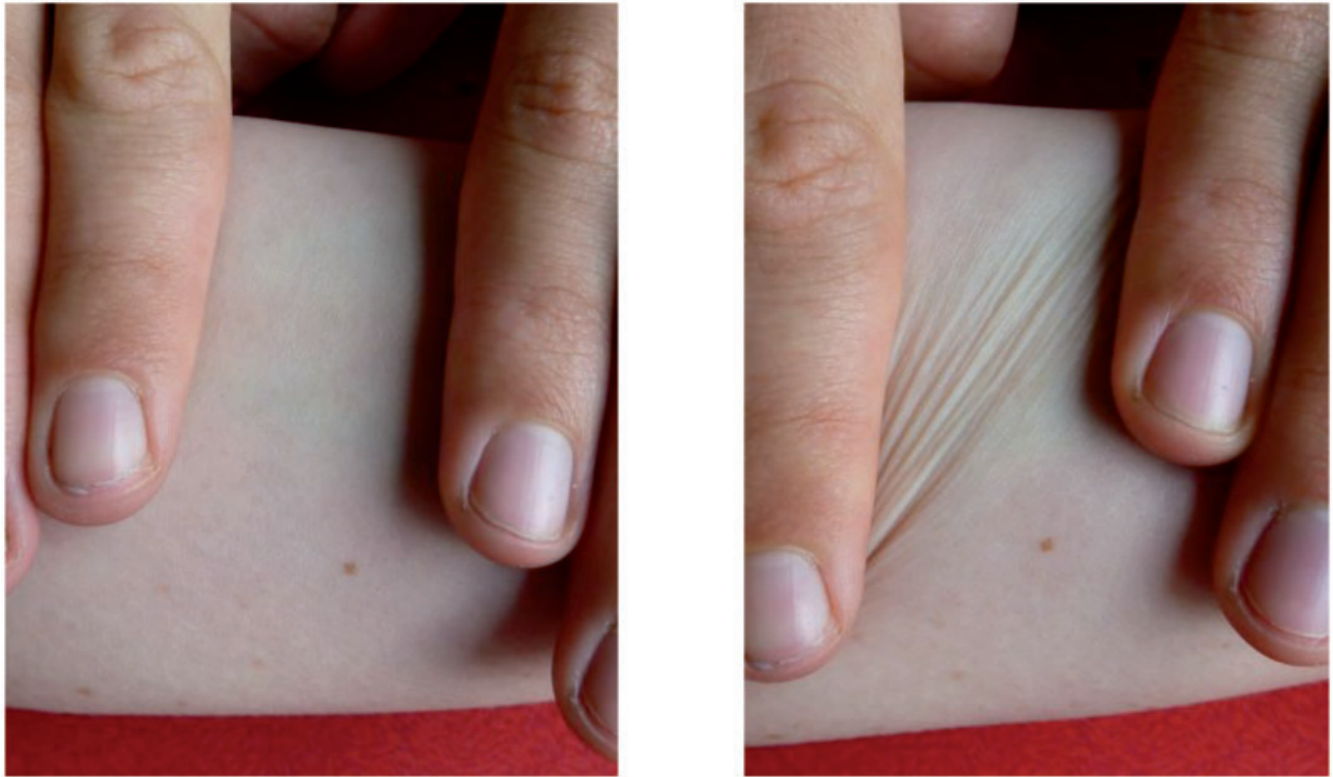Abstract
We propose two toy-models to describe, predict and interpret the wrinkles appearing on the surface of skin when it is sheared. With the first model, we account for the lines of greatest tension present in human skin by subjecting a layer of soft tissue to a pre-stretch, and for the epidermis by endowing one of the layer’s faces with a surface tension. For the second model, we consider an anisotropic model for the skin, to reflect the presence of stiff collagen fibres in a softer elastic matrix. In both cases, we find an explicit bifurcation criterion, linking geometrical and material parameters to a critical shear deformation accompanied by small static wrinkles, with decaying amplitudes normal to the free surface of skin.

We explore how the alignment of surface wrinkles relate to the directions of the reinforcing fibres in the skin. This technique is used to estimate the Langer lines (directions of greatest tension), which then indicates where incisions are best made for surgery.